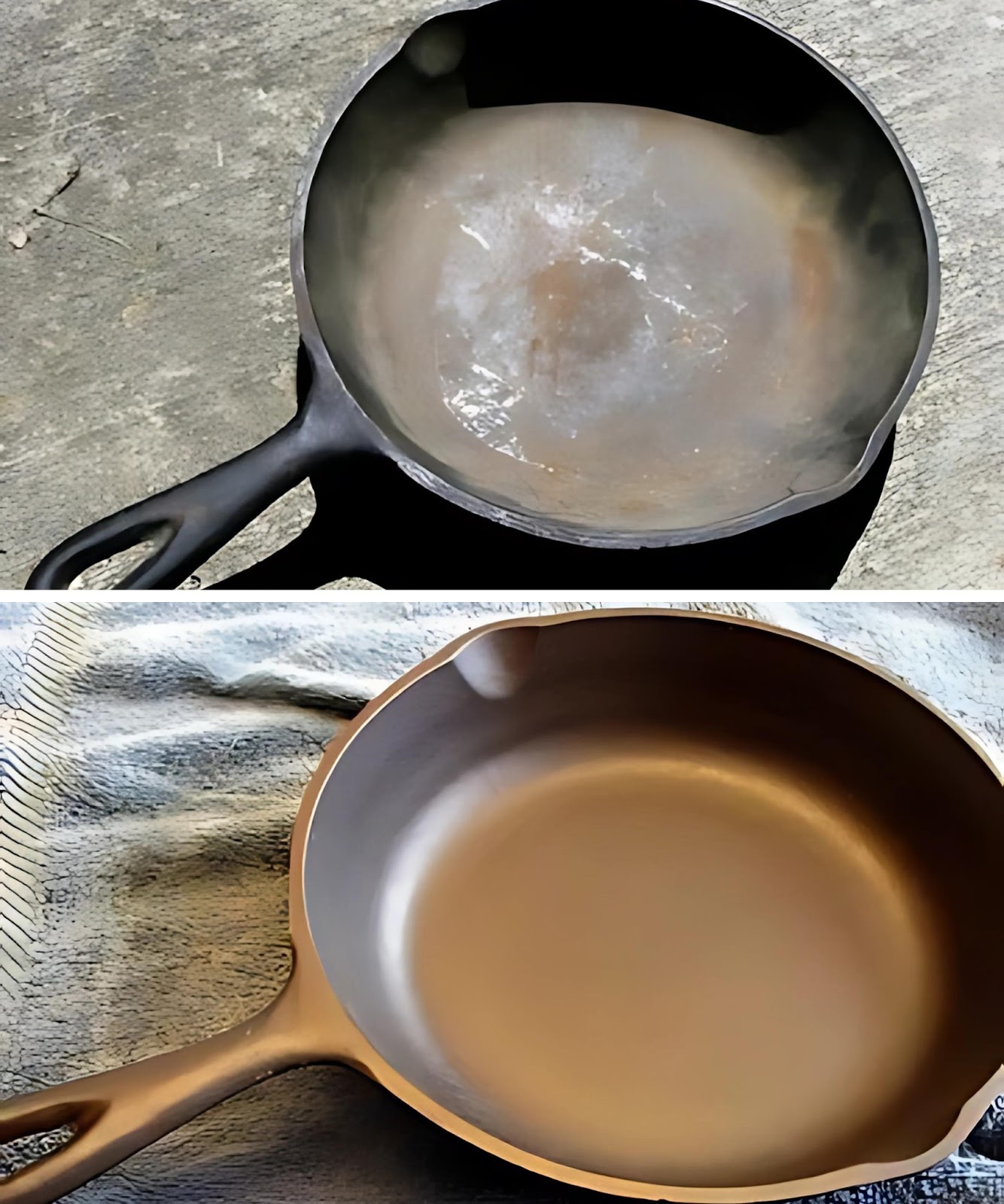Step 2: Increase Oven Temperature
Remove the skillet from the oven and increase the temperature to 450°F (232°C).
Step 3: Apply Oil
Rub a thin layer of oil over all surfaces of the skillet, including the handle and the underside. Use a neutral oil with a high smoke point, such as vegetable oil, flaxseed oil, or grapeseed oil.
Buff the pan thoroughly with paper towels or a clean rag to remove excess oil. The skillet should look matte, not shiny.
Step 4: Bake the Skillet
Place the skillet upside down on a rack in the preheated oven. Put a sheet of aluminum foil on the rack below to catch any drips.
Heat the skillet for one hour. This process polymerizes the oil, forming the first layer of seasoning.
Step 5: Repeat the Process
Let the skillet cool completely before repeating the oiling and baking process up to four more times. Each additional layer strengthens the seasoning, creating a durable, non-stick surface.
By the end of the process, your skillet should have a smooth, gray or amber-colored coating that resembles non-stick cookware.
Tips for Maintaining Your Cast Iron Skillet
Avoid Soaking in Water: Prolonged exposure to water can lead to rust. Clean the skillet immediately after use and dry it thoroughly.
Use Mild Soap Sparingly: While modern cast iron can handle soap, avoid harsh detergents that strip seasoning.
Reapply Oil Regularly: After cleaning, rub a thin layer of oil onto the skillet to maintain its seasoning.
Store in a Dry Place: Ensure your skillet is completely dry before storing it to prevent rust.
The Benefits of a Well-Seasoned Cast Iron Skillet
A properly seasoned cast iron skillet offers numerous advantages:
Non-Stick Surface: Perfect for frying eggs, searing meat, and baking.
Durability: With proper care, cast iron can last for generations.
Versatility: Suitable for stovetops, ovens, and even campfires.
Even Heat Distribution: Ensures consistent cooking results.
Conclusion
Restoring and reseasoning your cast iron skillet may seem like a time-consuming process, but the results are well worth the effort. By following these detailed steps, you’ll not only restore your skillet’s functionality but also extend its lifespan for years to come. Whether you’re cooking a hearty breakfast or preparing a gourmet dinner, a well-seasoned cast iron skillet will be your reliable kitchen companion.
ADVERTISEMENT

